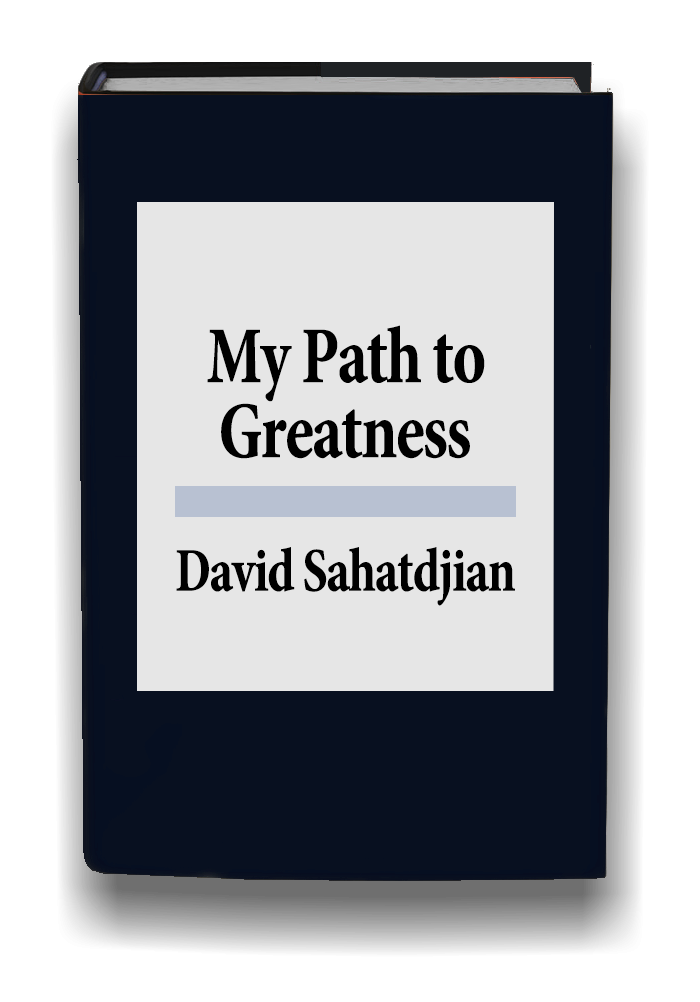My Path to Greatness
“Johan Manootdjian is a true New Yorker…imbues the world of 1950s and ’60s Manhattan with a tinge of the surreal…The novel calls to mind the expansive biographical projects of Proust or Knausgaard…A keen-eyed coming-of-age novel with a vintage feel.”
—Kirkus Reviews
My Path to Greatness is available in hardcover, paperback, and as an ebook

Reviews
Booklife Review, 2025
“It’s Armenian,” young Johan Manootdjian answers when asked by an acquaintance about his last name. “What’s that?” the acquaintance inquires. The response from Johan, a New Yorker to the bone: “It’s some kind of country where the dead live.” This exchange—a moment charged with confusion and shame but also self-defining poetry—exemplifies this sprawling coming-of-age story from Sahatdjian (author of Salvation Is to Be Found in Her), which finds Johan, a boy whose scholarship and athleticism are impressing nobody, growing up in the Upper West Side of the Eisenhower era, both scarified and embarrassed by his parents’ old-world religiosity.
“Momma, is the whole world going to hell and we’re not because we go to the tabernacle and they don’t?” Johan asks, an early indication of the alienation that will keep him from inviting friends to his apartment. Hefty and vivid, abounding with city incident and incisive portraiture, My Path to Greatness charts out the start of Johan’s development from Episcopal primary school to teen truancy, from naif to street-savvy adolescent all-too-familiar with violence and heartbreak, from mother’s boy to hormone-charged voyeur. Readers who love New York narratives and ambitious, demanding accounts of adolescence will be entranced.
Sahatdjian conjures, with the power of memory, a lost New York, as Johan takes jobs at a florist and Kaminski’s House of Paperback Books, or beholds on his travels the long-gone old Penn Station: “a vast concourse with marble columns and wrought iron grillwork and giant windows through which light pours as if from Heaven itself.” Johan’s thieving and terrors—real-world, existential, sexual—compel, though the storytelling, especially in the novel’s first-person-first half, is episodic, impressions and incidents that gradually accrete into selfhood. Johan’s confused sexual development, in which religious guilt meets a taste for the forbidden and the panic of Splendor in the Grass, drives the more conventional back half, but Sahatdjian resists easy conclusions. The telling ends abruptly, pointedly so, as Johan’s life gushes undescribed.
Takeaway: Vivid midcentury epic of growing up on the Upper West Side.
Comparable Titles: James McBride’s The Color of Water, Peter Balakian’s Black Dog of Fate.